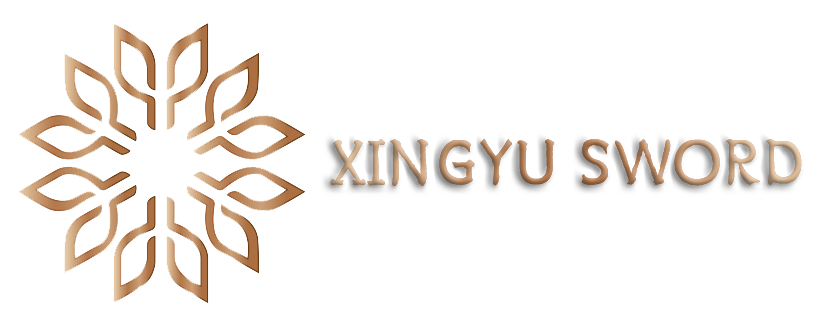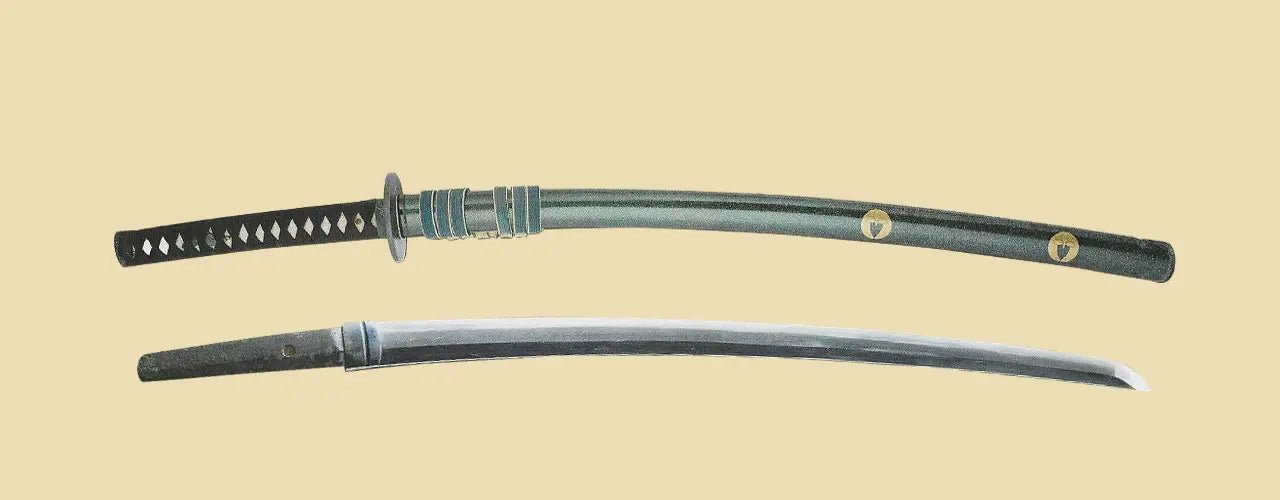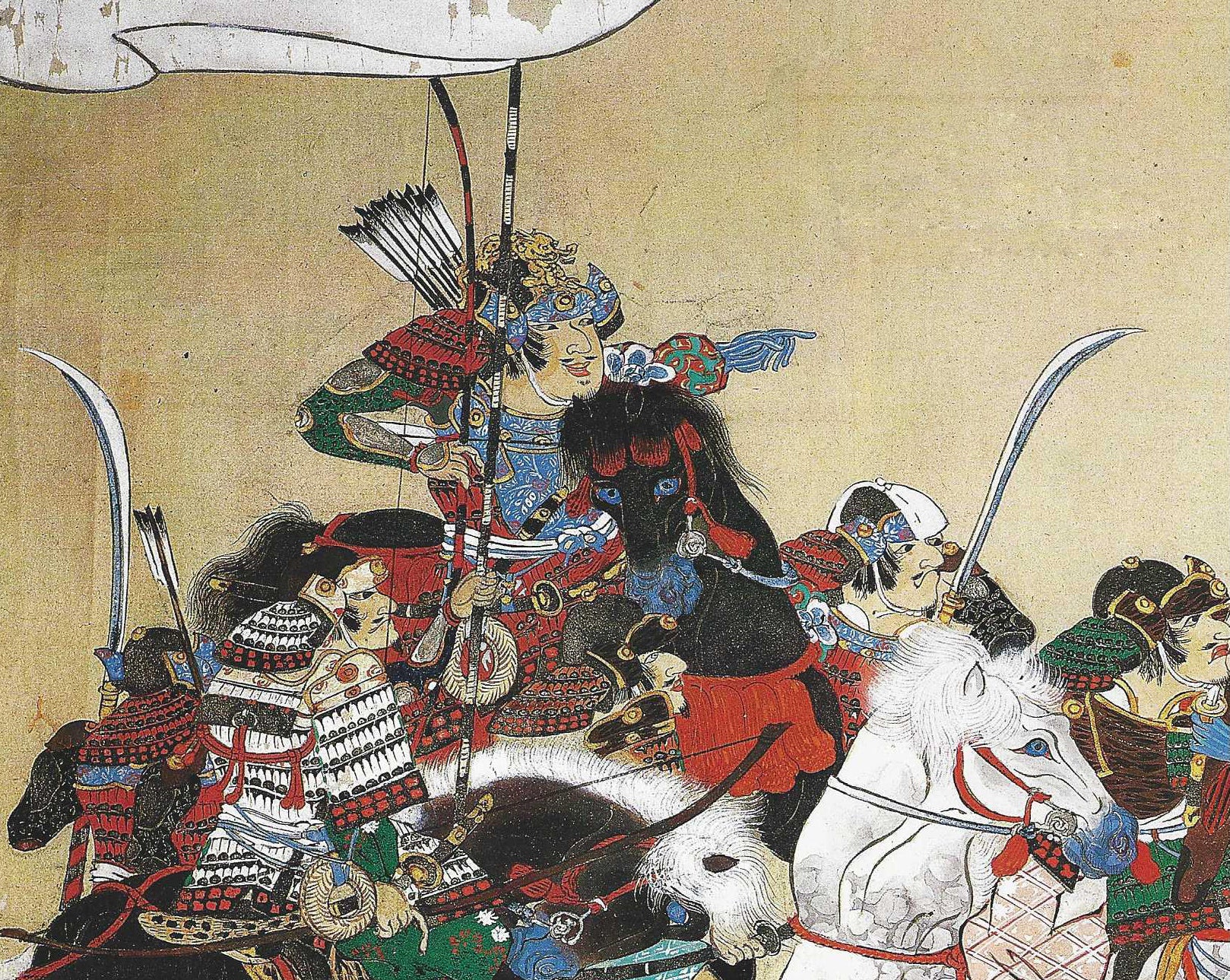This is a pair of "fuchi" and "kashira" on a group of "daisho" (daisho, a group of Japanese swords worn by samurai). "Fuchi" is a metal ring at the base of the wooden handle; "kashira" is the metal cap at the bottom of the handle. This pair of "fuchi" and "kashira" is made of red copper, and the surface is decorated with perforated caviar patterns. The fine eagle inlay is made of gold.
These three sets of accessories are "tsuba", "fuchi" and "kashira", with rice ears as the decorative theme, in which rice grains are made of gold and rice leaves are made of red copper. The rice ears are embedded in the iron tsuba, and the top is carved with hollow clouds and moons. The moon on the tsuba is made of gold foil and clouds, with two drops of gold around it. The fuchi and kashira are made of red copper, and their surfaces are decorated with caviar.
This is a pair of "menuki", i.e. decorations on both sides of the handle. One is a deer and the other is a mythical figure holding a turtle. Both are carved with red copper and the details are inlaid with gold foil.
"Mitokoromono" is a three-piece accessory for a Japanese sword, including a pair of "menuki", a "kozuka" (multi-purpose knife), and a "kogai" (a tool used by samurai to arrange their hair). In this accessory set, the menuki is a golden lion, and the red copper kozuka and kogai are also lion designs.
Mitokoromono set. Menuki in this set is a bird carved with gold and bronze; kogai and kozuk with gold edges are made of red copper carved with caviar patterns, birds and plum trees carved in relief, and plum blossoms inlaid with gold.








Leave a comment
This site is protected by hCaptcha and the hCaptcha Privacy Policy and Terms of Service apply.